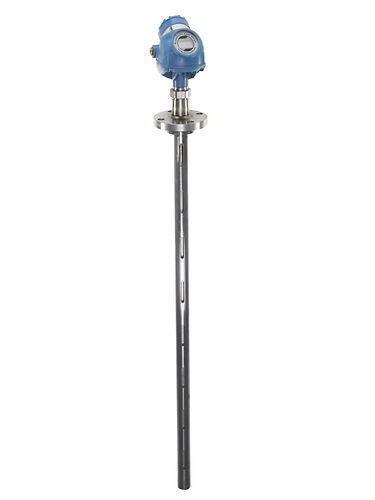Rosemount™ 5300 Guided Wave Radar Level Transmitter further prevents costly product ingress and maximizes tank throughput and profitability
AUSTIN, Texas (July 15, 2019) – Emerson announced today that it has enhanced its Rosemount™ 5300 Guided Wave Radar Level Transmitter to optimize separation process performance and prevent costly product ingress by accurately measuring a thinner top liquid layer in interface applications. The Rosemount 5300, which is the market-leading guided wave radar for liquid level measurement (VDC Research 2017), can now also perform measurements to the top of a tank, enabling increased throughput and profitability. Additional new features provide greater ease-of-use, increased safety and enhanced performance in the most challenging level and interface applications.
Operators have long struggled to obtain the most accurate level interface measurements to increase the efficiency of separators and maximize profits. In addition, with large tanks able to contain millions of gallons of liquids, even a small volume inaccuracy can translate into millions of dollars in lost revenue.
In interface measurement applications such as separators, the top product layer must be of a certain minimum thickness for a guided wave radar transmitter to distinguish between the echoes from the two liquids. Previously, this minimum detectable thickness would be between 50 and 200 millimeters. Emerson’s unique patented Peak in Peak interface algorithm now enables the Rosemount 5300 to detect a top liquid layer of just 25 millimeters. This further prevents unwanted product ingress and enables the performance of a separation process to be optimized, helping users maximize operational efficiency and profitability.
The Rosemount 5300 can provide accurate and repeatable measurement to the very top of a tank when used with a large diameter coaxial probe, enabling users to optimize tank capacity and increase throughput. These probes provide the strongest return signal, have no upper dead band and are not affected by obstacles on the tank wall. High amplitude noise created as microwaves passing through the process seal between transmitter and probe has traditionally affected measurement accuracy at the top of the tank. Enhanced process seal design has enabled Emerson to eliminate this noise, facilitating accurate measurement to the top of the tank during both filling and emptying phases.
To increase measurement reliability and ease-of-use in upstream oil and gas applications, the Rosemount 5300 features a new factory-configured threshold setting, where the echo below the threshold is assumed to be oil and the echo above the threshold is assumed to be water. This eliminates double signal bounces that can be mistaken as an interface level measurement and enables more predictable behavior. This creates a true plug-and-play device that simplifies installation and operation.
“Maximizing tank capacity and increasing throughput are important objectives for end users, as this leads to increased profitability,” said Christoffer Widahl, product management lead with Emerson’s measurement and analytical business. “The ability of the Rosemount 5300 to accurately and reliably measure a thinner top liquid layer and right to the top of the tank, enables them to achieve this, even in the most challenging level and interface applications.”
To ensure the integrity of the transmitter in safety-critical applications such as overfill prevention and dry pump protection, verification reflector functionality enables comprehensive remote proof-testing of the device with 94% test coverage. This can be performed in minutes from the control room during operation and without having to raise the tank level to a potentially hazardous point, thereby reducing downtime, minimizing risk and maximizing the safety of both plant and workers. Compared with traditional diagnostics, which only monitor the transmitter electronics, verification reflector functionality can also be used to diagnose problems with the upper parts of the probe inside the tank, such as corrosion monitoring and other process-related conditions.
Further supporting increased ease-of-use, the Rosemount 5300 is now fully and easily configurable using a broad range of customer tools, with both the Device Descriptor and Device Type Manager configuration methods updated to the latest device dashboard. The device’s configuration software can now switch between Rosemount and NAMUR (Normenarbeitsgemeinschaft für Messund Regeltechnik in der Chemischen Industrie) alarm limits, thereby providing users with increased flexibility of choice.


